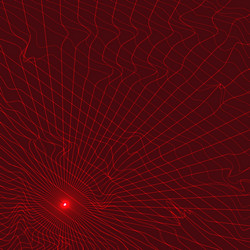Mid-infrared pulse generation via OPCPA
High-intensity light sources emitting in the mid-infrared have received particular attention for a broad range of applications, including spectroscopy and strong-field physics. For example, mid-infrared light sources have been used for investigations of molecular dynamics and for probing the behaviour of strong-field photoionisation. Development of new laser technologies combining high intensities and short pulse durations is necessary for these applications. OPCPA is particularly attractive in this respect. Moreover, mid-infrared wavelengths are accessible with OPCPA, provided broadband phase matching can be achieved. EU-funded researchers focused on chirped quasi-phase matching (QPM) gratings, offering broadband OPCPA in the mid-infrared. Within the project CQPMAMP (Chirped quasi-phasematching gratings for optical parametric chirped pulse amplification: Physics, devices, and applications), they studied the design of QPM-based OPCPA in detail. A significant advantage of QPM over conventional birefringent phase matching is the potential to design frequency converters with the desired properties, such as broad bandwidth with custom phase profile. This is possible with the use of lithographic fabrication techniques. Several constraints were, however, found that need to be considered in order to achieve ultra-broadband amplification of high quality. The issues identified include non-linear losses associated with random cycle errors and coincidentally phase-matched non-linear processes. A new system was designed to account for the recent advances in understanding the operation of these devices and to suppress parasitic spatial effects. This high-repetition-rate, collinear three-stage OPCPA operates at 50 kHz and generates 41.6 femtosecond pulses with 12 microjoules of energy. Researchers also explored new QPM configurations that could provide twice as much energy. They demonstrated OPCPA based on a non-collinear beam configuration in combination with QPM implemented in periodically poled lithium niobate. With this configuration, mid-infrared pulses could be generated with pulse duration of 44.2 femtoseconds and pulse energy of 21.8 microjoules. This energy figure represents more than an 80 % improvement compared to the previous system using the same pump and seed lasers. CQPMAMP results represent the first comprehensive investigation of chirped QPM devices operating in strongly non-linear regimes. More importantly, the several project publications provide a roadmap for advancing and experimentally implementing OPCPA systems based on these devices.






